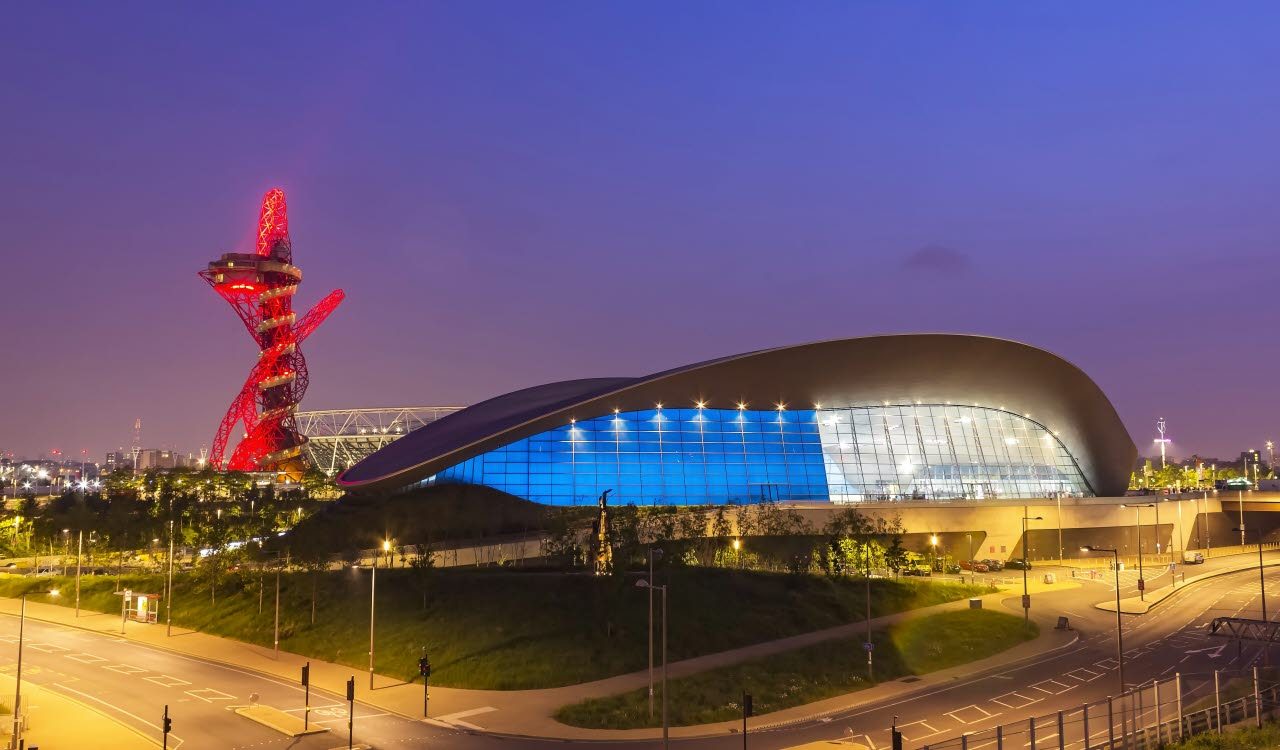After hosting the 2012 Olympics, an ambitious transformation programme has built a dynamic new heart for East London, creating 40,000 jobs by 2025 and 24,000 new homes by 2031 – and showing how urban regeneration can be sustainable and environmentally friendly.
In 2005, when London won the bid for the 2012 Olympics and Paralympics, the future Queen Elizabeth Olympic Park in East London was a very different place.
Today’s vibrant community of homes, businesses, leisure facilities and parkland was an urban wasteland: contaminated by oil, tar, arsenic and lead, suffocated by invasive plants and with polluted waterways.
The local area also suffered from the highest concentration of socio-economic disadvantage in the UK.

The aquatics centre has become a hugely popular community destination since the Olympics
Building the Olympic dream
The first challenge was to transform the area for the Olympics with 14 permanent and temporary sports venues, 20km of new roads, 13km of tunnels, 26 bridges, areas of new parkland, and transport and accommodation for 17,000 athletes and officials. All while staging the most sustainable games ever.
The project also focused on how the Olympics could improve the lives of people in East London after the games: redeveloping the sports stadia and housing to improve the environment, create jobs and boost the local economy.
Creating a positive legacy
Since 2012, the post-Olympics landscape has been transformed with more than 35km of pathways and cycleways, 6.5km of waterways, 4,300 trees, playgrounds and a park hosting year-round events and sporting activities.
The Olympic Stadium is now the home of West Ham United FC, while the London Aquatics Centre has become a hugely successful part of the community with more than two million visitors since opening to the public in 2014. The Copper Box Arena – home to handball, fencing and goalball during the games – is a popular fitness and entertainment venue used by local schools and sports clubs.
Affordable new homes in the Olympic park have been designed to appeal to extended, multi-generational families. Properties have secure bike storage, electric vehicle charging, solar panels and are close to bus stops to encourage public transport use. The area has a low-carbon, combined heat, cooling and power network.
A cultural future
Over the coming years, the transformation will continue with Queen Elizabeth Olympic Park welcoming new sites for Sadler’s Wells Theatre, BBC Music and the V&A Museum, as well as University College London and University of the Arts London's London College of Fashion.
Known as East Bank, these new arrivals will create a new destination for London with world-class culture and education at its heart – further demonstrating how construction, property and urban regeneration can transform communities and people’s lives.







